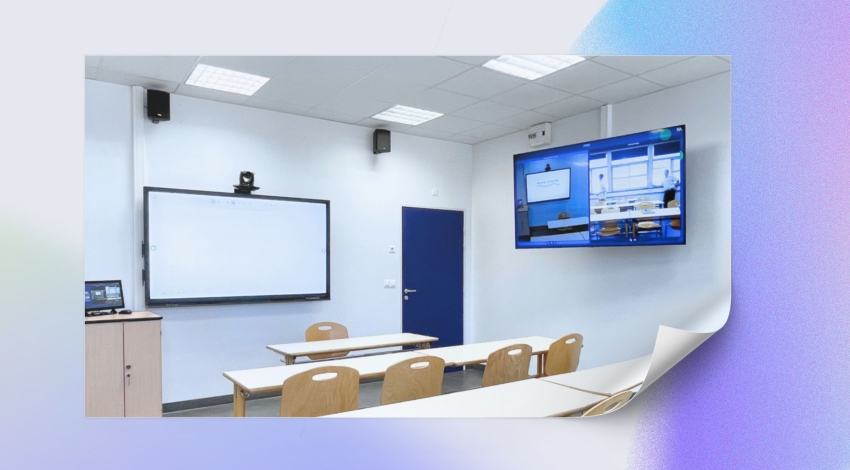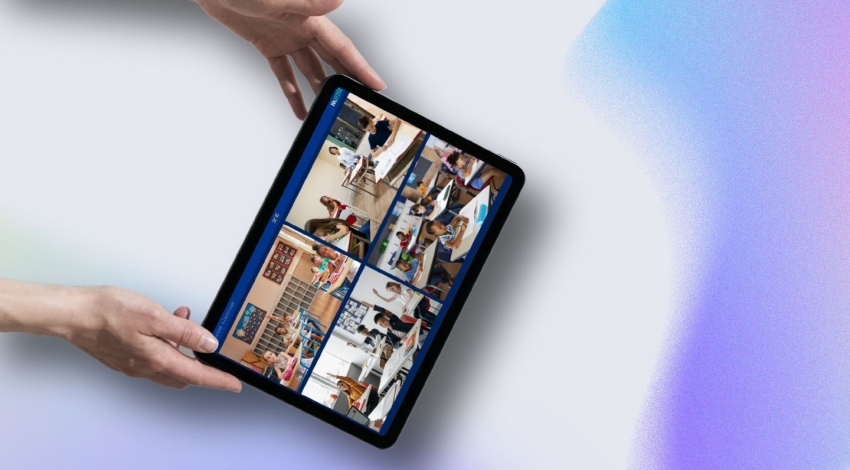

Live virtual classrooms are emerging as an innovative solution to overcome geographical barriers and teacher shortages, thereby providing access to quality education to learners worldwide. Combining advanced technologies and interactivity, these learning environments transcend the physical boundaries of traditional classrooms, allowing teachers to conduct live classes in equipped rooms while simultaneously connecting to dispersed groups of students. Despite technical and operational challenges, the benefits of live virtual classrooms, such as their ability to eliminate geographical barriers and provide access to specialized teaching, open new perspectives for the future of education.
A live virtual classroom is much more than a simple video conference. It's an interactive learning environment where a teacher delivers their course in a physically equipped classroom with advanced audiovisual technologies. The innovation lies in the technology's ability to simultaneously connect other classrooms, sometimes located in remote regions, allowing students to participate in real-time, as if they were physically present.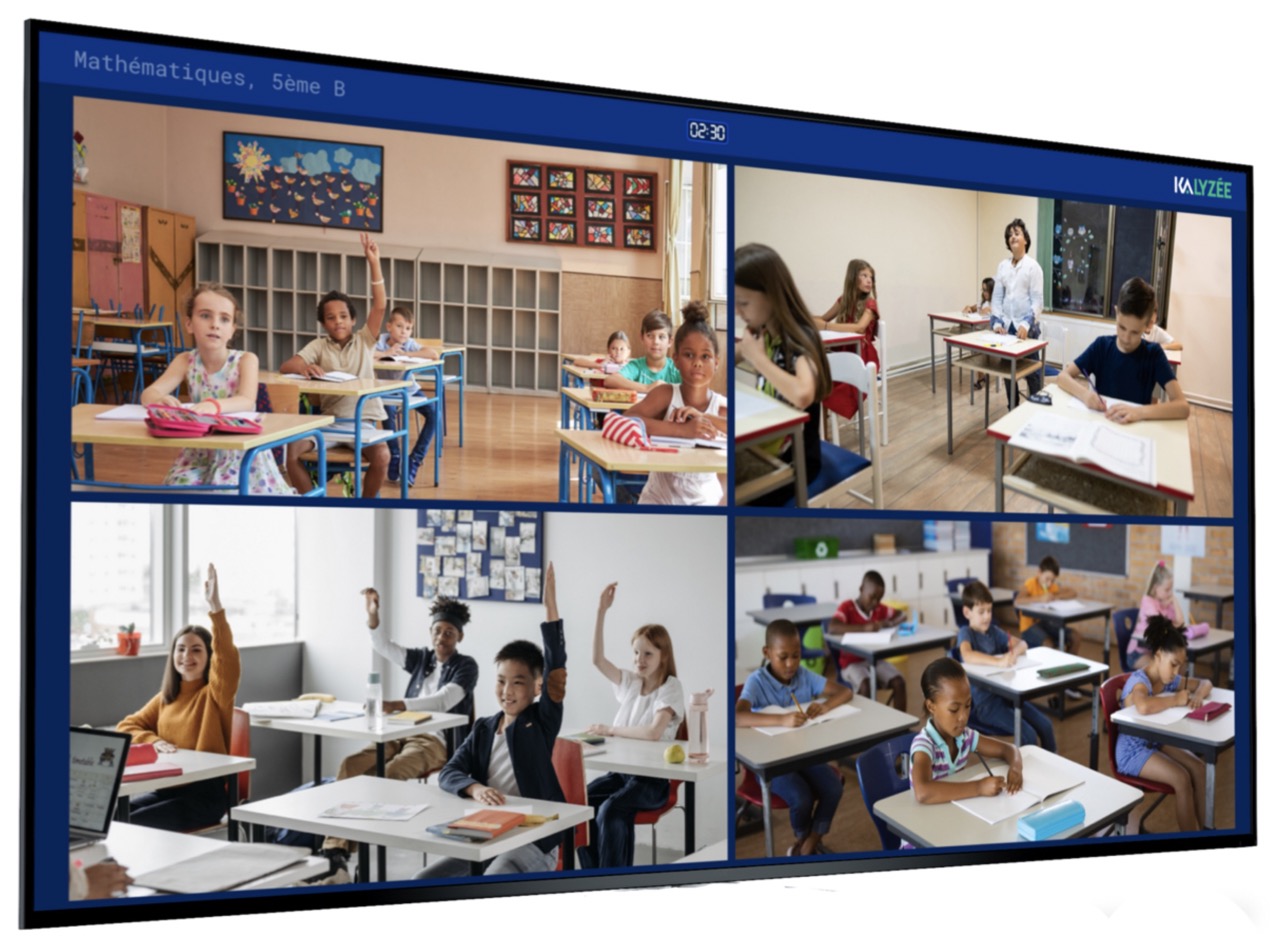
Live virtual classrooms enable the multiplication of teaching impact by simultaneously reaching multiple groups of learners, thus increasing participant numbers. As such, they provide the opportunity to deliver education in areas where trainers are scarce. To be effective, the virtual classroom must be as interactive as possible to ensure the teaching delivered is comparable to that of a traditional classroom.
Creating a virtual classroom allows learners in remote areas, often lacking primary or secondary education or qualified teaching, to benefit from lessons taught by competent teachers while staying at home. Isolated communities can benefit, thus reducing educational disparities between urban and rural areas.
Access to specialized teachers in specific fields can be limited in some places. Virtual classrooms offer the opportunity to access quality education in specialized subjects such as sciences, foreign languages, or information technology, even in contexts where these skills are not locally available.
In September 2023, the first three hybrid classrooms of the "Connected Guyana: Bridging Gaps" project opened their doors to middle school students in Antecumpata, Talluen, and Kayodé. These three villages, isolated on the banks of the Maroni River and hours by canoe from the nearest middle school in Maripasoula, have traditionally sent children to boarding school, creating a difficult family dislocation for both children and their families.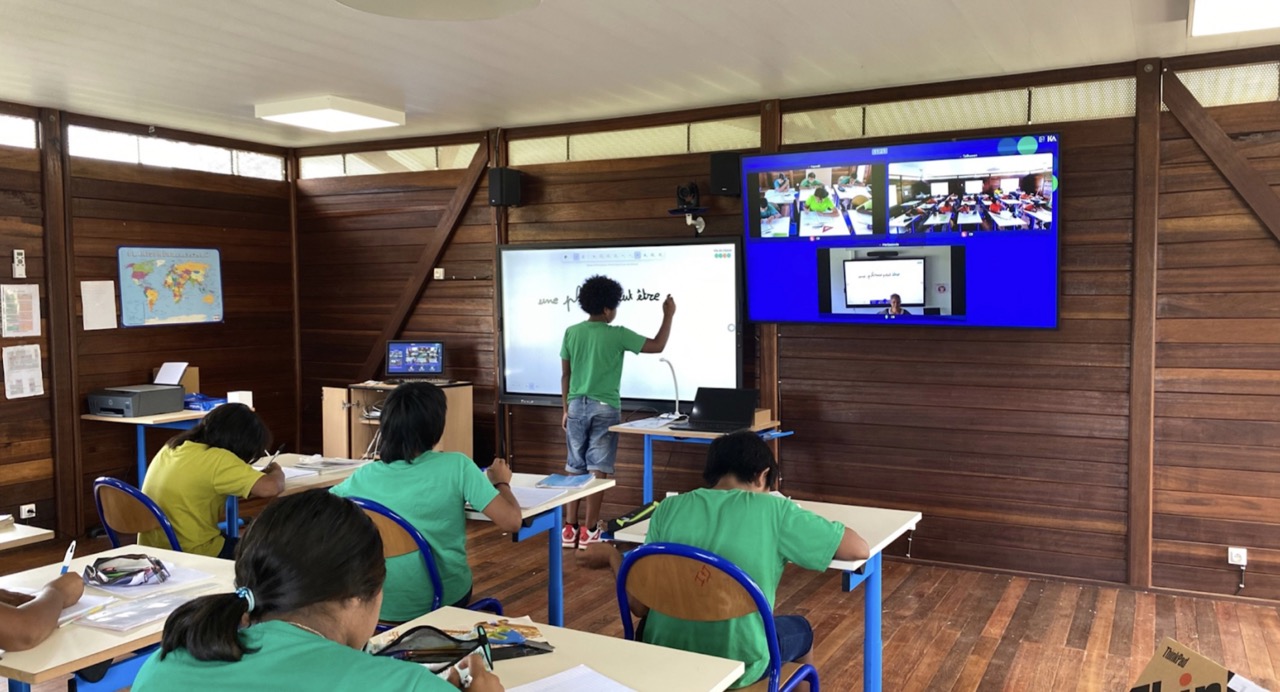
Today, interconnected virtual classrooms allow live transmission of classes from the college across these three different villages.
The implementation of virtual classrooms, although promising, is not without technical and operational challenges. Without addressing these, the system has no chance of being viable over time and being adopted by its users.
One of the main technical challenges of virtual classrooms lies in managing audio and video quality. In an interconnected environment of multiple classrooms, synchronizing different audio sources can be complex, leading to issues such as background noise and interference. Furthermore, ensuring optimal video quality, especially in high definition, is crucial to guarantee an immersive and effective learning experience for all participants. The arrangement of these educational rooms and the sound and visual settings are significant.
The greatest barrier to adopting virtual classroom systems lies in their complexity. While launching a virtual classroom does not always require advanced technical skills, our 10 years of experience in the field of educational hybridization have shown that in most institutions, starting a course broadcast requires at least five to ten minutes of setup and preparation (and that's when it works). This lost time for students and teachers is a real obstacle to the efficient use of these systems. To foster their adoption and make progress in this area, it is imperative to simplify processes or even automate broadcasts.
It is important to understand that setting up an interconnected virtual classroom goes beyond installing a simple videoconferencing tool like Zoom. While these platforms are effective for distance courses with students or teachers individually connected from their homes, they are not optimized to manage the auditory complexity of multiple interconnected rooms. Even with the use of high-quality microphones, such as ceiling microphones, and proper settings, audio management in the context of live virtual classrooms remains highly complex.
Indeed, in a typical classroom, many background noises can occur, such as chair noises, student chatter, the rustling of pencil cases, or the humming of ventilation. These sounds, although manageable in a single room, become problematic when they accumulate in an environment of several communicating rooms. The main challenge is the difficulty of managing these multiple audio sources in a single videoconferencing session. When attempting to connect multiple rooms, this accumulation of background noise and interference makes communication incoherent and of poor quality, thus demonstrating the limitations of traditional videoconferencing systems for this type of educational application.
The streaming technology commonly used in videoconferencing tools may provide video quality that is insufficient for the specific needs of a virtual classroom. For an optimal learning experience, it is crucial that the live video of a virtual classroom be in high definition.
For over 10 years, Kalyzée has been guiding schools, businesses, universities, and training centers through the intricacies of comodality. The ideal comodal room from Kalyzée represents a significant advancement in the field of distance education, offering a comprehensive and integrated solution for live virtual classrooms, interconnecting multiple classrooms and automating all broadcasts. Here are our expert recommendations for creating your hybrid classrooms:
Two room cameras (board view, room view)
An animation console (start and stop the virtual classroom with a click)
One or two feedback screens (to display remote rooms)
An interactive whiteboard or projector (interconnected and shared so that all rooms can write or share on it live)
A ceiling tile microphone (to ensure spatially distributed sound quality)
Speakers
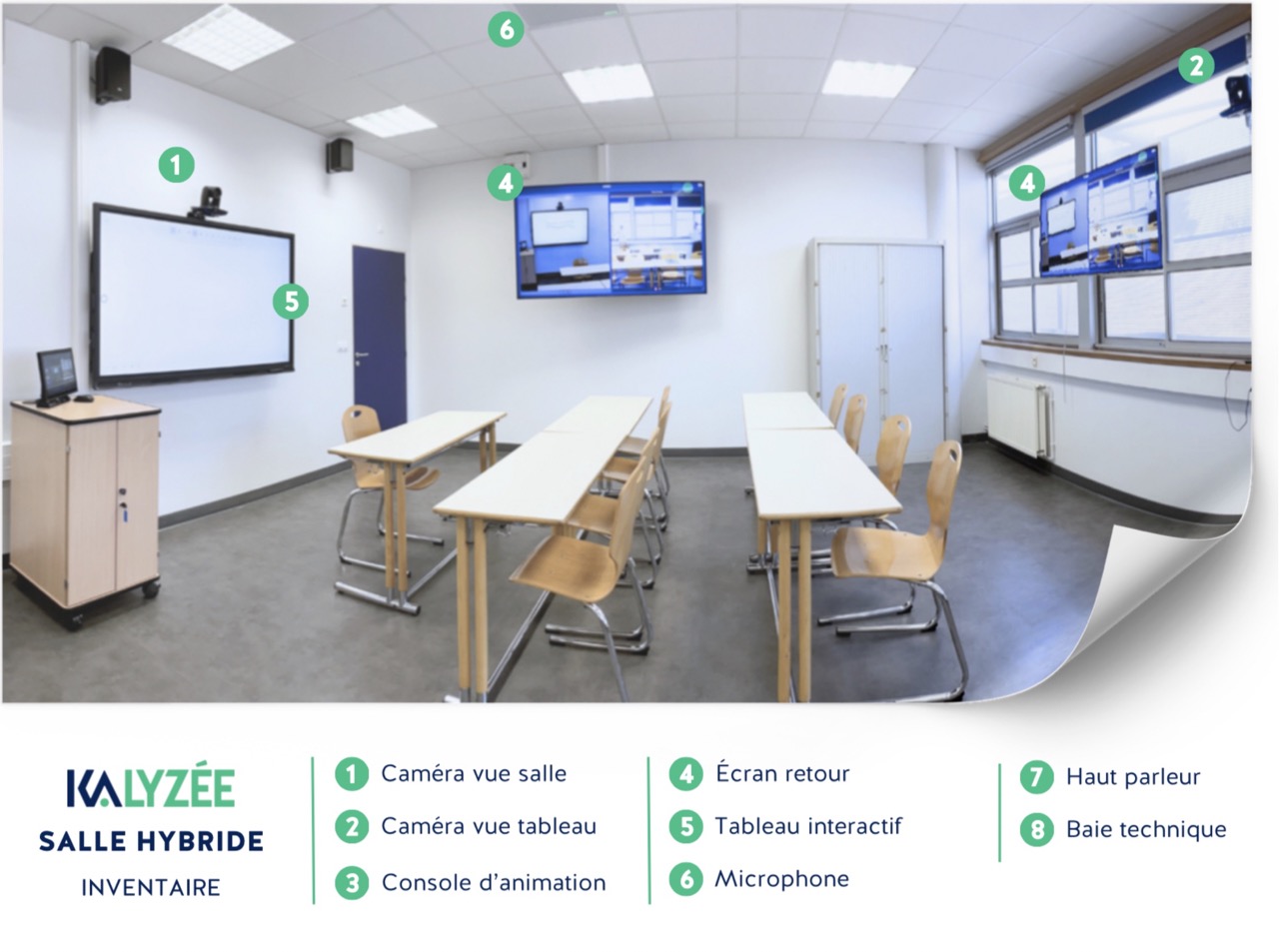
Communication technology (live streaming): Live streaming in interconnected virtual classrooms is recommended due to its ability to provide high-definition video image quality, unmatched by standard videoconferencing solutions. This superior quality is essential to ensure smooth interactivity, given the broadcasting of the entire class, and to maintain student engagement throughout the course. Thus, the use of specialized streaming solutions capable of supporting the load of multiple rooms connected simultaneously is crucial to guarantee an optimal learning experience.
Automated Management System: Integrating an automated management system into your hybrid rooms is essential for a smooth teaching experience. Two approaches are possible: scheduling class sessions via your calendar, allowing for automatic connection of rooms and the start of streaming on the day of the class, without requiring intervention from the teacher, or the automatic daily broadcasting of virtual classrooms, where rooms start automatically each morning, without the need for prior planning.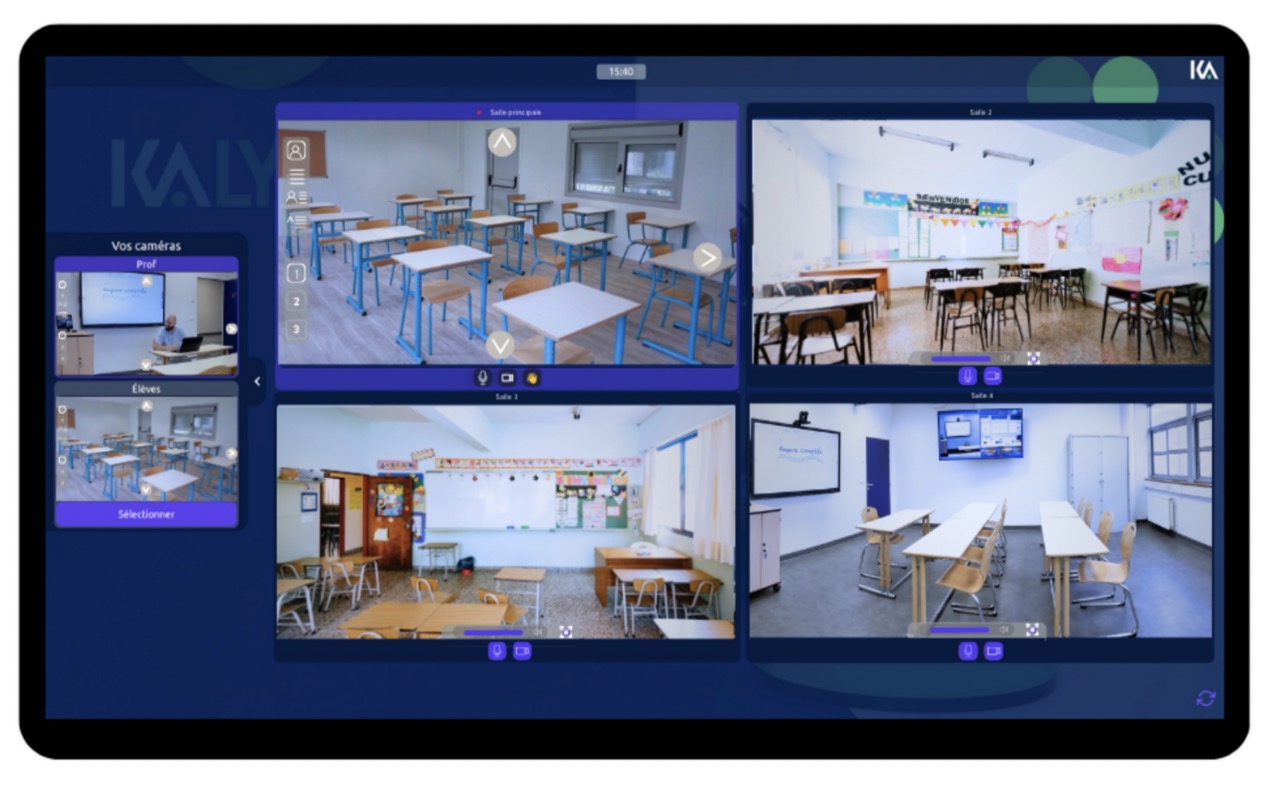
Content Sharing and Collaborative Whiteboard: To ensure total interactivity and immersion for remote learners, we recommend equipping your rooms with a collaborative whiteboard and shared application. This allows all learners to annotate or share content across the different interconnected rooms.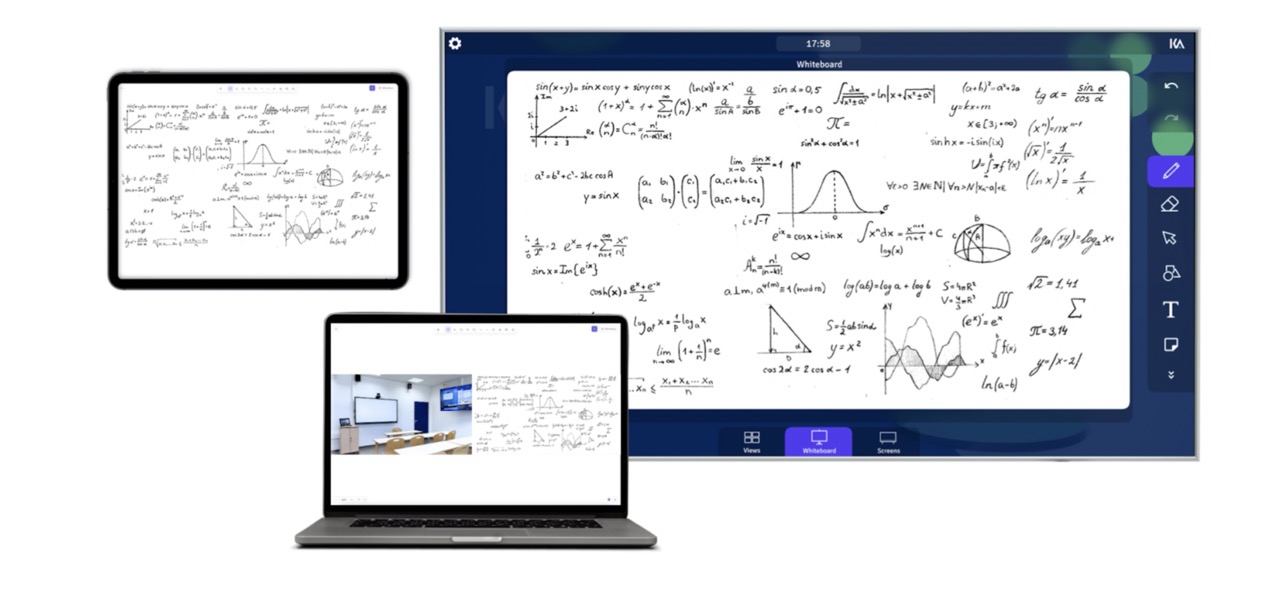
Few solutions integrate all these features. To deploy an integrated, automated, interactive, and collaborative system, we recommend enlisting our specialized teams. Furthermore, we emphasize the importance of training teachers in the use of these tools, as well as using French solutions to ensure the security and digital sovereignty of your data.
At Kalyzée, we are convinced that the future of education lies in the harmonious integration of advanced technological solutions and innovative pedagogy. Our specialized teams are here to assist you in setting up effective and integrated virtual classrooms, tailored to your specific needs and ensuring the security and digital sovereignty of your data.
To discover how virtual classrooms can transform your approach to teaching and open new perspectives for your students, contact us today. Together, let's build the future of connected education and E-learning.
